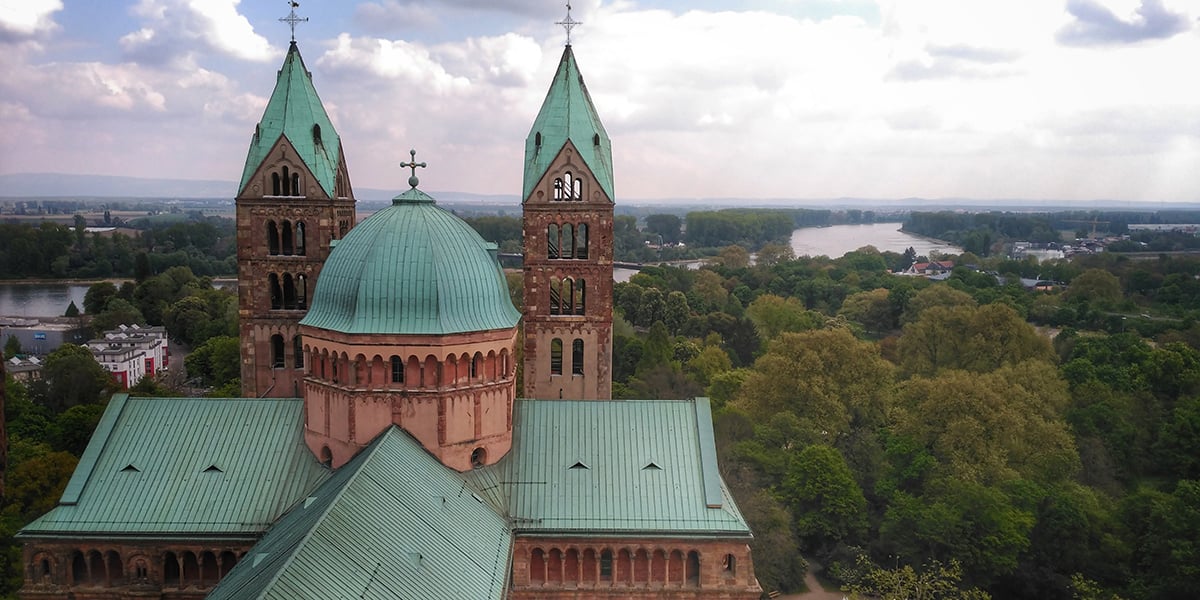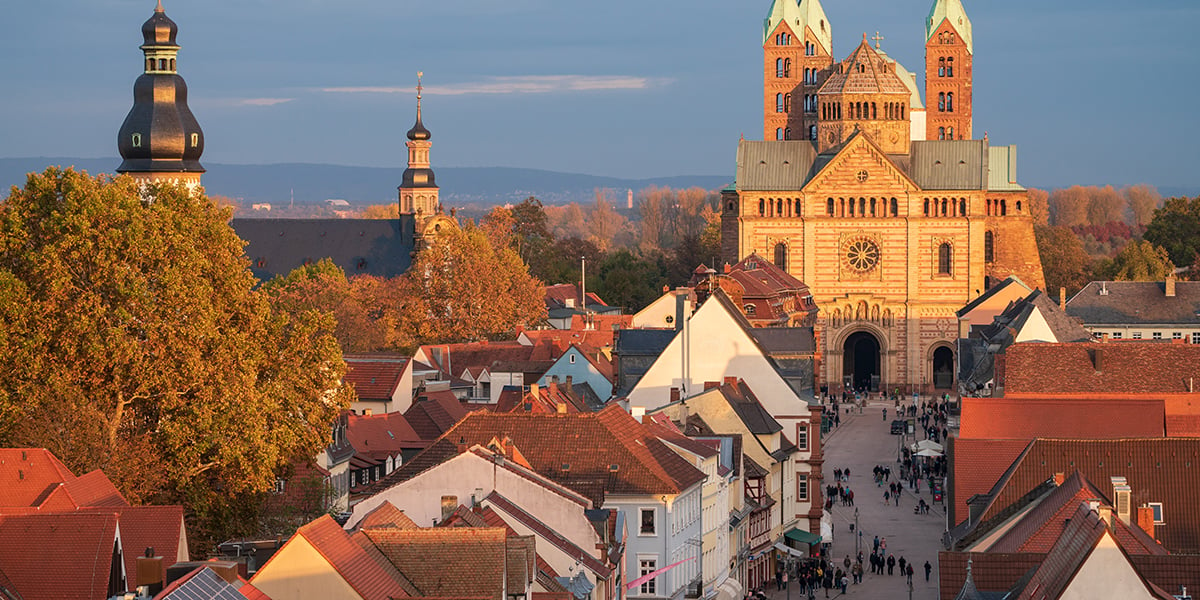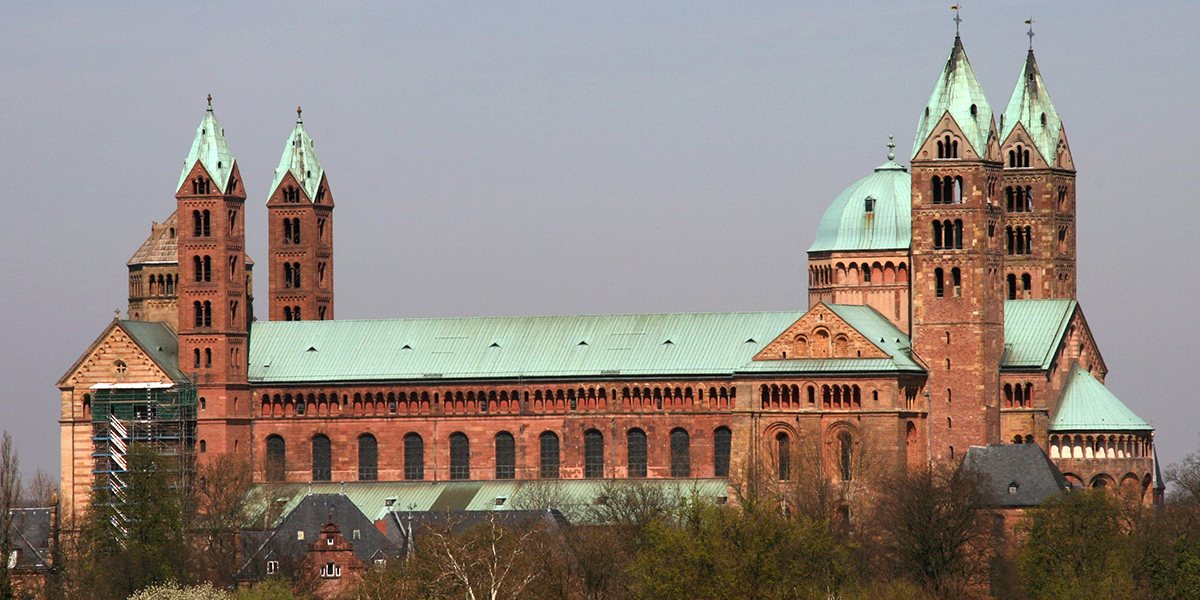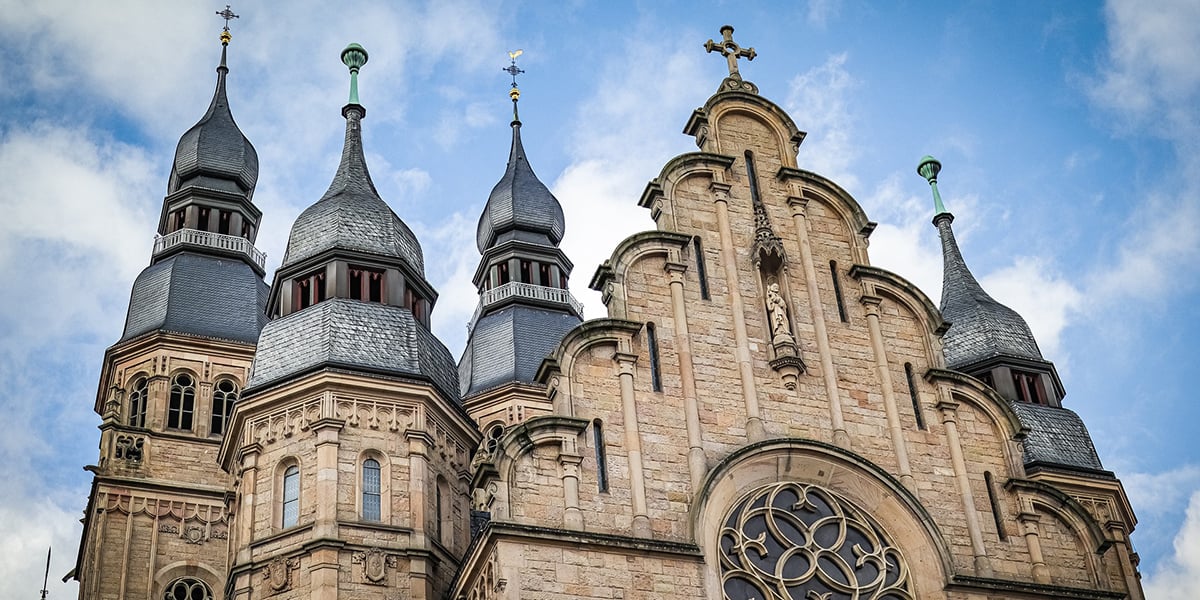Pope Leo XIV – Inaugural Mass Homily
Elected on May 8, 2025, as the 267th successor of St. Peter, Pope Leo XIV’...

Dr. Italy continues his “virtual tour” of sites on his upcoming Rhine pilgrimage, exploring the city of Speyer, Germany, in this 7 min. radio interview. Speyer has its beginnings in a Roman settlement, but in the early Middle Ages, it became an important center and imperial city of the Holy Roman Empire. Speyer’s cathedral is one of the earliest and most magnificent examples of the architectural style know as Romanesque.
Of the many military camps founded by the Romans in the first century BC, the town that came to be known as Spira (today Speyer) in Germany is one of the oldest. By the mid fourth century, this growing Roman town had a bishop and a thriving Christian community. Then came the barbarian invasions which destroyed the town. In the seventh century, Speyer was re-established and did its best to endure.
Around the year 1000, the dark ages of chaos and pagan raids subsided, and Speyer began to thrive. Holy Roman Emperors, crowned by the Pope, made it their residence, though it was the town’s bishop who served as the local political authority. A Jewish community was founded there and made Speyer a cultural center for medieval Jewry. When anti-Semitism raised its ugly head throughout the empire and pogroms broke out, Bishop John of Speyer invited the Jewish community to take refuge in his episcopal palace, and then arranged for them to be protected even more securely in a nearby castle. He also decreed that anyone convicted of violence against a Jew would face severe punishment.

Above image of Speyer Cathedral by Roman Eisele. CC 4.0.
Emperor Conrad II, early in the 11th century, realized that Speyer’s existing church was no longer suitable to serve as the imperial cathedral. So he had the church dismantled to make way for an immense church built in a brand new style later called Romanesque. Rising to heaven on massive piers built into its thick walls, it resembled a fortress whose grandeur would image the grandeur of God and the majesty of his emperor. Conrad and his son Henry died before this temple, at the time the biggest church in Europe, could be consecrated. Both were buried there as would be six other Emperors and kings over the span of the next 250 years.
Speyer became a landmark of European history in successive ages. Late in the 11th century, the Holy Roman Emperor, Henry IV, was excommunicated by the reforming Pope Gregory VII (Hildebrand). Henry departed Speyer and made the dangerous trek through the Alps in winter to meet the Pope in Canossa, Italy. There he approached the pope barefoot, in penitential garb, as a sign that secular power comes from God and may not pretend to trample the rights of the Church. He was absolved and restored to communion.

Above image of Speyer Cathedral by Sail over. CC 3.0.
Centuries later, Speyer was the location of the imperial Diet (a sort of congress) at which Emperor Charles V forbade the spread of Lutheranism. Several Lutheran princes lodged a formal “protestation” of this decree at Speyer. Ever since that time their movement has been known by the name “Protestant.”

Above image of Saint Joseph’s Church by PhotoEnduro on Pixabay. Pixabay license.
Though the quaint town of Speyer is known for its fortress-like Cathedral, one of the oldest, largest and best-preserved Romanesque churches in Europe, our visit there will conclude with consideration of a modern fortress of faith associated with the town. The convert from Judaism, Edith Stein, who was baptized downstream in Cologne, chose to live many years in Speyer working quietly as a lay teacher in the school run by the Dominican Sisters, right across the street from the Cathedral. From Speyer, Edith returned to Cologne to herself become a Carmelite sister and ultimately suffer in the horrible pogrom known as the holocaust.
How marvelous that, in a place where Jews were once welcomed and sheltered by a noble bishop, that a Jewish convert would be welcomed by a community of nuns who would, as her vocation matured, become the greatest Jewish-Catholic saint since the days of the apostles: St. Benedicta of the Cross, co-patron of Europe.
Banner/featured image of Speyer Cathedral by Travelinho. CC 3.0.
No Comments